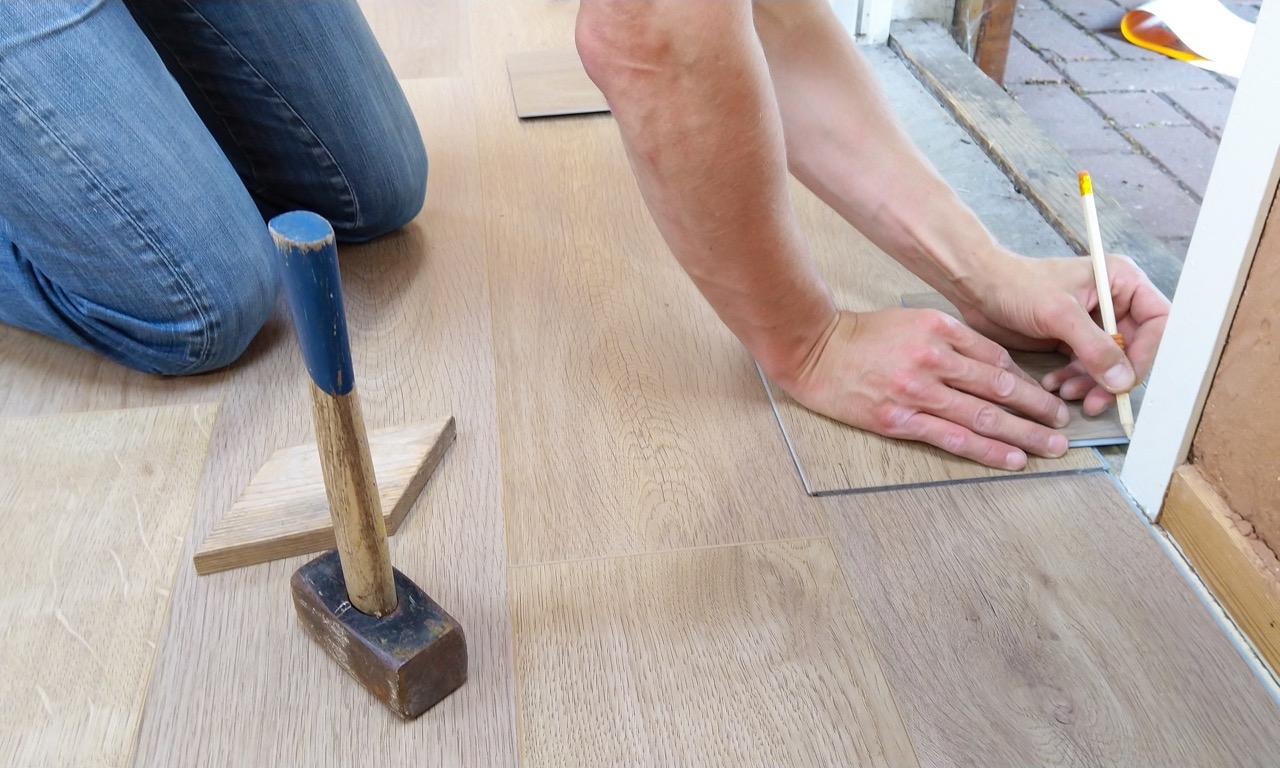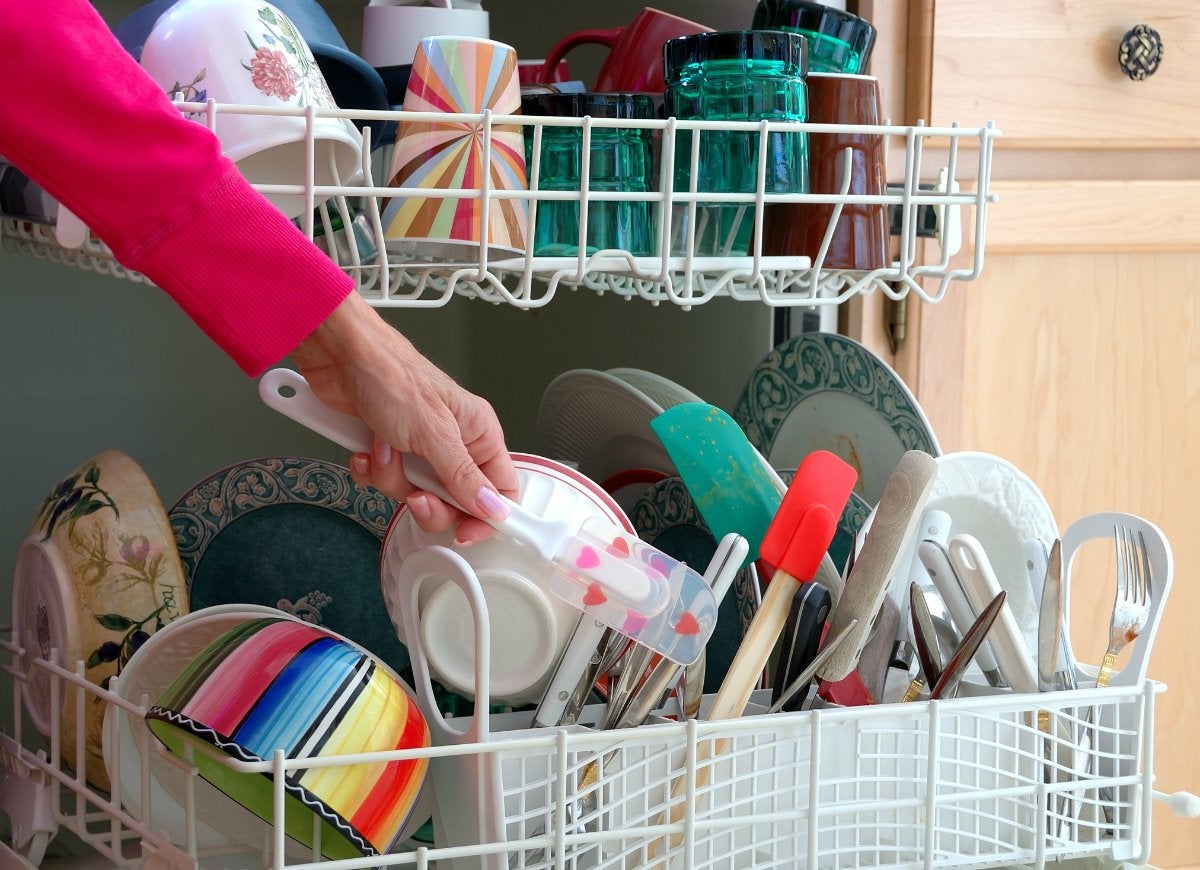Home>Articles>The 6 Biggest Mistakes DIYers Make And How To Avoid Them


Articles
The 6 Biggest Mistakes DIYers Make And How To Avoid Them
Modified: December 7, 2023
Avoid these 6 major DIY mistakes to save time, money, and frustration. Learn from our articles and become a pro at DIY projects.
(Many of the links in this article redirect to a specific reviewed product. Your purchase of these products through affiliate links helps to generate commission for Storables.com, at no extra cost. Learn more)
Introduction
Embarking on a do-it-yourself (DIY) project can be an exciting and fulfilling endeavor. Whether you’re renovating your home, building furniture, or tackling a craft project, DIY offers a sense of accomplishment and creativity. However, without proper planning and execution, it’s easy to make mistakes that can lead to frustration and disappointment.
In this article, we will discuss the six biggest mistakes DIYers make and provide valuable tips on how to avoid them. By learning from these common pitfalls, you can enhance your DIY skills and ensure successful outcomes for your future projects.
So, let’s dive in and discover how to avoid these costly mistakes!
Key Takeaways:
- Proper planning, thorough research, and attention to safety are crucial for successful DIY projects. Rushing, poor workmanship, and neglecting maintenance can lead to subpar results and disappointment.
- DIYers should prioritize patience, precision, and ongoing care to achieve professional-looking results and ensure the longevity of their projects. Embrace the joy of creation and the satisfaction of putting your personal touch into your work.
Mistake #1: Lack of Planning
One of the biggest mistakes DIYers often make is underestimating the scope of their projects. It’s essential to thoroughly evaluate what needs to be done and anticipate any challenges that may arise. By doing so, you can avoid surprises and ensure a smoother project execution.
Another aspect of planning is setting a budget. Failing to establish a budget can lead to overspending, resulting in abandoned projects or compromised quality. Take the time to research the costs of materials, tools, and any professional assistance you may need. This will help you allocate your resources wisely and avoid unnecessary financial strain.
Additionally, neglecting to create a timeline can cause delays and frustration. Having a clear schedule allows you to prioritize tasks, set realistic deadlines, and allocate time for unforeseen issues. Consider the time needed for each step of the project, including preparation, execution, and any necessary drying or curing times. A well-planned timeline will help you stay organized and maintain momentum throughout the project.
Mistake #2: Skipping Research
Another critical mistake DIYers often make is skipping the research phase. It’s crucial to gather the necessary skills, knowledge, and information before diving into a project. By conducting thorough research, you can save time, money, and avoid costly mistakes.
First and foremost, not researching the necessary skills and knowledge can lead to frustration and subpar results. Take the time to educate yourself on the techniques and methods required for your project. Watch tutorials, read instructional books, and seek advice from experienced individuals. This will empower you to approach the project with confidence and increase your chances of success.
Furthermore, failing to gather information about materials and tools can have a significant impact on your project’s outcome. Different materials have different properties and may require specific handling or care. Research the appropriate materials for your project and understand how to use them effectively. Similarly, familiarize yourself with the tools needed and how to operate them safely and efficiently.
Neglecting to explore different techniques and methods can limit your creativity and result in a project that lacks originality. Take the time to discover alternative approaches to your project. Explore different techniques, experiment with different materials, and consider incorporating unique design elements. Researching these options can spark inspiration and elevate the quality of your work.
Mistake #3: Ignoring Safety Precautions
One of the most important aspects of any DIY project is ensuring the safety of yourself and others involved. Unfortunately, many DIYers make the mistake of overlooking safety precautions, which can lead to accidents and injuries. It is crucial to prioritize safety and take the necessary steps to prevent potential hazards.
One common mistake is not wearing appropriate safety gear. Each project may require different protective equipment, such as safety goggles, gloves, masks, or ear protection. Always identify the potential risks associated with your project and ensure you have the proper gear to protect yourself.
Neglecting to follow safety guidelines and instructions is another significant mistake. Many projects come with specific safety instructions or guidelines provided by manufacturers or industry standards. It is essential to carefully read and adhere to these guidelines to mitigate risks and ensure a safe working environment.
In addition, failing to secure the work area properly can lead to accidents or damage. Make sure your work area is well-organized, clear of clutter, and free from tripping hazards. Secure any loose materials or tools to prevent them from falling or causing injury. Taking these precautions will create a safer environment and reduce the likelihood of accidents.
When working on a DIY project, always make sure to measure twice and cut once. Taking the time to double-check your measurements can save you from costly mistakes and wasted materials.
Mistake #4: Rushing Through the Project
When it comes to DIY projects, patience is key. Rushing through a project is a common mistake that can result in subpar results and dissatisfaction. It’s important to take the necessary time for each step to ensure a successful outcome.
Failing to allocate sufficient time for each step can lead to mistakes and oversights. Each task in a project deserves proper attention and care. Rushing through steps can cause inaccuracies, unevenness, or even the need to redo certain parts, ultimately wasting time and effort.
Neglecting to properly prepare surfaces before starting is another mistake that can compromise the quality of your project. Whether you’re painting, applying a finish, or working with adhesive, preparing the surface is crucial for optimal results. This may involve cleaning, sanding, or priming, depending on the project. Taking the time to prepare the surface ensures better adhesion and a smooth finished look.
Similarly, not allowing for proper drying or curing times can have a negative impact on your project. Whether it’s paint, stain, or adhesive, each material requires adequate time to dry or cure. Rushing the process may result in smudges, unevenness, or compromised durability. Follow the recommended drying or curing times provided by the manufacturer to achieve the best results.
Mistake #5: Poor Quality Workmanship
The quality of your workmanship greatly influences the final outcome of your DIY project. Unfortunately, many DIYers make the mistake of neglecting certain aspects of craftsmanship, resulting in subpar results. It’s crucial to pay attention to the details and maintain a high standard of quality throughout your project.
Failing to measure and cut accurately is a common mistake that can lead to ill-fitting pieces and a lack of precision. Taking the time to measure carefully and double-check your measurements ensures that all components fit together correctly. Use proper tools, such as a tape measure and a square, to achieve accurate cuts and maintain the integrity of your project.
Neglecting to apply even coats of paint or finish can significantly impact the visual appeal of your project. Uneven application can result in streaks, blotches, and an overall unprofessional finish. Take your time to apply paint or finish evenly, using smooth strokes or a sprayer if applicable. Follow the recommended guidelines for coverage and drying times to achieve a smooth and consistent appearance.
Another mistake to avoid is not properly sealing or finishing your project. Whether it’s a piece of furniture or a home improvement project, sealing or finishing is essential for protection and longevity. This step can involve applying a coat of varnish, sealant, or wax to protect against moisture, UV damage, and wear and tear. Neglecting this step can cause your project to deteriorate quickly and require frequent repairs or maintenance in the future.
Mistake #6: Overlooking Maintenance and Proper Care
Completing a DIY project is a significant accomplishment, but the work doesn’t end there. Many DIYers make the mistake of overlooking the importance of ongoing maintenance and proper care for their projects. Neglecting these aspects can lead to premature deterioration and the need for costly repairs. It’s essential to prioritize and maintain your projects to ensure their longevity and continued enjoyment.
One common mistake is neglecting to perform regular maintenance and repairs. Just like any other object or structure, DIY projects require attention to ensure they remain in good condition. Regularly inspect your projects for any signs of wear, damage, or deterioration. Addressing these issues promptly can prevent them from worsening and becoming more difficult or expensive to fix in the future.
Failing to clean and store tools properly is another mistake that can lead to diminished functionality and shortened lifespan. After each use, take the time to clean your tools thoroughly and remove any debris or residue. Properly store them in a clean and dry environment, whether it’s hanging them on a pegboard, placing them in a toolbox, or using dedicated storage solutions. This will help prevent rust, corrosion, and damage, allowing your tools to remain in optimal working condition.
Ignoring proper care and handling of finished projects can also have negative consequences. Whether it’s a piece of furniture or a home improvement project, it’s essential to follow any specific care instructions provided. This may include using coasters to protect surfaces, avoiding harsh chemicals, or regularly applying a protective coating. By following these guidelines, you can prolong the life of your projects and maintain their appearance and functionality for years to come.
Conclusion
Embarking on a DIY project can be a rewarding and fulfilling experience, but it’s crucial to avoid common mistakes that can hinder your progress and diminish the quality of your work. By being aware of the potential pitfalls and taking proactive measures to prevent them, you can ensure successful outcomes and enjoy the process even more.
First and foremost, proper planning is paramount. Take the time to evaluate the project scope, set a budget, and create a realistic timeline. Researching the necessary skills, materials, and techniques is also essential to ensure you have the knowledge and resources needed to tackle your project effectively.
Safety should never be overlooked. Always wear appropriate safety gear, follow safety guidelines, and secure your work area to prevent accidents and injuries. Furthermore, rushing through a project can lead to mistakes, so take your time for each step, prepare surfaces properly, and allow for proper drying or curing times.
Poor quality workmanship can greatly impact the end result, so measure and cut accurately, apply paint or finish evenly, and seal or finish your project to ensure its longevity. Lastly, don’t forget about ongoing maintenance and care. Regularly perform maintenance and repairs, clean and store your tools properly, and follow care instructions for your finished projects.
By avoiding these six mistakes and adopting best practices, you’ll be well on your way to achieving professional-looking results and enjoying the satisfaction of a job well done. Embrace the journey of DIY projects, continue to learn and improve your skills, and let your creativity shine through.
Remember, the journey of DIY isn’t just about the end result; it’s also about the joy of creation and the fulfillment that comes with putting your own personal touch into your projects. So, go forth, tackle your next DIY endeavor with confidence, and enjoy the journey!
Frequently Asked Questions about The 6 Biggest Mistakes DIYers Make And How To Avoid Them
Was this page helpful?
At Storables.com, we guarantee accurate and reliable information. Our content, validated by Expert Board Contributors, is crafted following stringent Editorial Policies. We're committed to providing you with well-researched, expert-backed insights for all your informational needs.















0 thoughts on “The 6 Biggest Mistakes DIYers Make And How To Avoid Them”